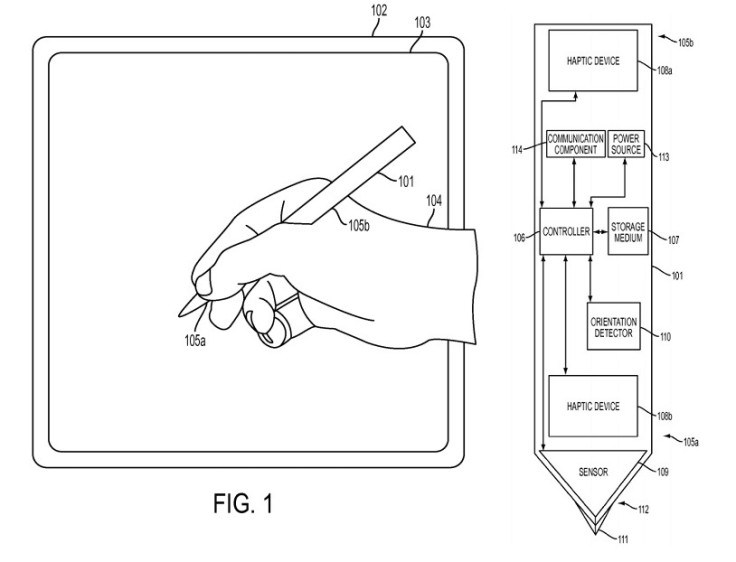Apple develops tablet stylus to simulate textures of on-screen objects

Apple is working on a stylus which can simulate the feeling of writing and drawing on a range of different surfaces and textures. The stylus could be used for the widely rumoured iPad Pro tablet, due later this year to compete with the Microsoft Surface.
Despite Steve Jobs once saying no one wants to use styluses, Apple has shown increasing interest in developing such a tool for use with a new generation of iPad. The latest patent application, filed in January and published on 20 July, details how a stylus would use complex haptic feedback to make the user feel like they are drawing on a range of different surfaces.
This has the potential to make sketching on the glass screen of a future iPad feel more like drawing on a sheet of paper. Apple refers to the technology as a "touch implement with haptic feedback for simulating surface texture," and explains how feedback felt through the stylus will change as the user drags it over different parts of the screen.
Force Touch
In some instances the stylus will use sensors to work on what is displayed on the screen below it, while in other uses it will receive commands via Bluetooth or Wi-Fi to change the haptic feedback accordingly. The stylus is part of Apple's ongoing mission to make interacting with touch screens more natural; the first steps along this path saw the Apple Watch and newest MacBooks employ Force Touch to give haptic feedback through their respective screen and trackpads. Rumours claim the upcoming iPhone 6s, due in September, will also feature a Force Touch display.
The patent, discovered by Patently Apple, also details how the stylus could automatically adjust the feedback it gives based on changes in writing pressure, angle or orientation. A second patent published the same day outlines a second stylus technology being developed by Apple, only this time working in reverse. The second patent explains how a future stylus could use a camera to recreate what different surfaces and textures look like, then display them in digital form on a tablet's display.
This could be used by computer aided design (CAD) engineers to capture the texture and look of a real world object, then upload it to a suite of design and mapping applications. Apple is widely expected to announce a new model of iPad called the iPad Pro later this year. It is tipped to have a 12.9in screen, much larger than the 9.7in iPad Air 2, and be aimed at professionals looking for a tablet to replace their laptop.
© Copyright IBTimes 2025. All rights reserved.






















